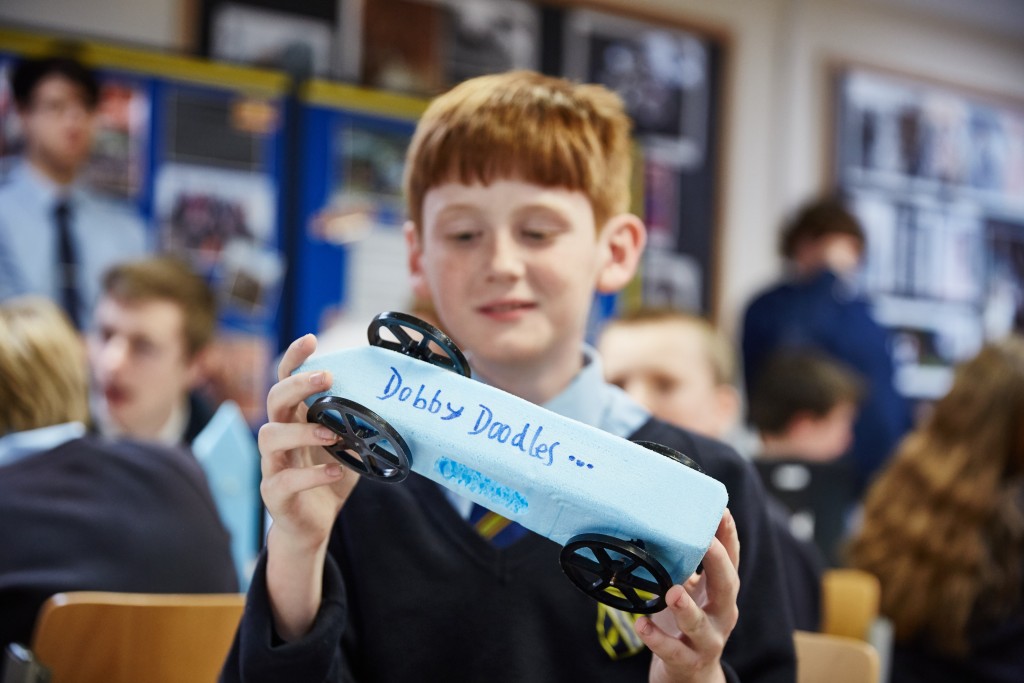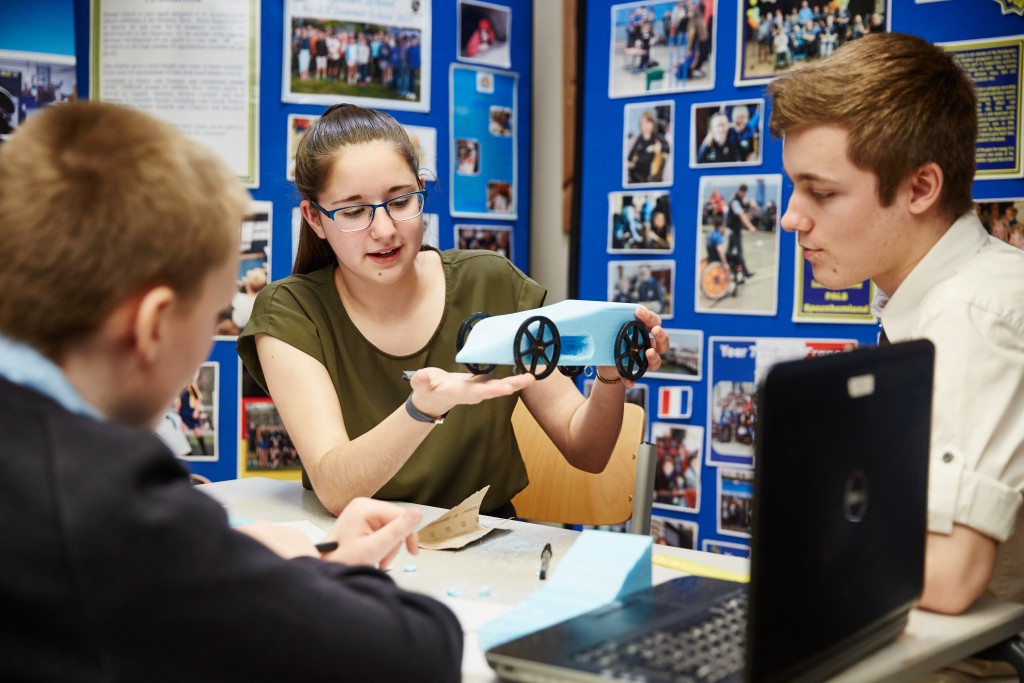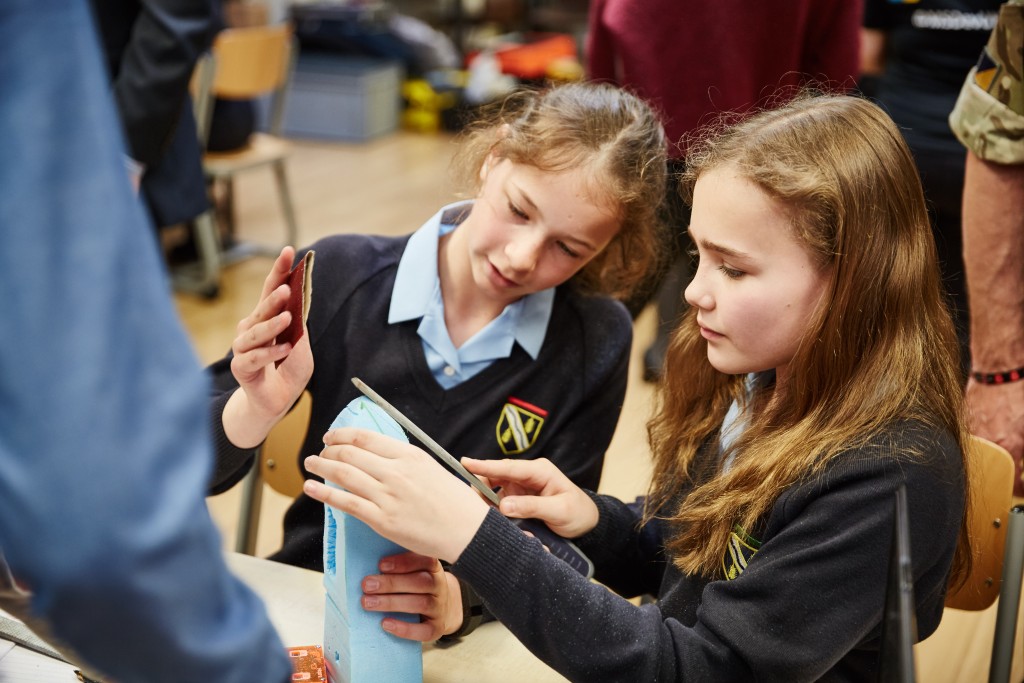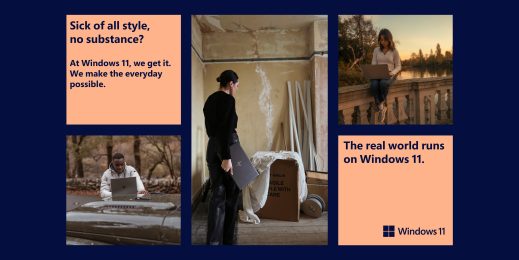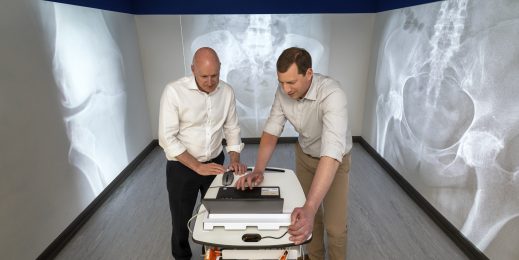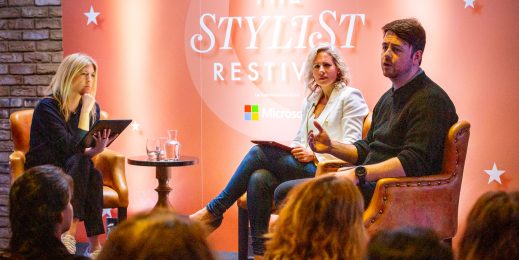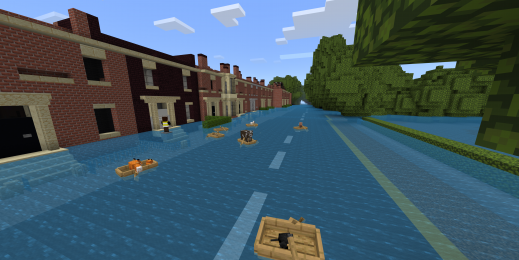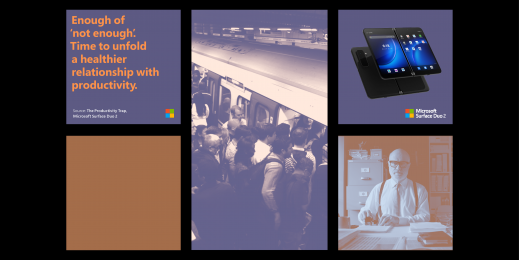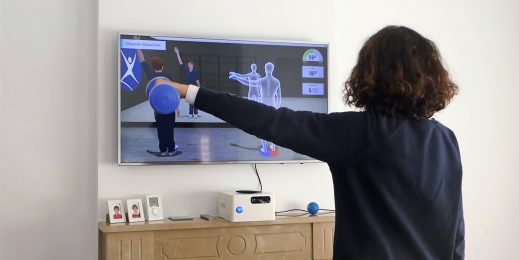The school that built a 64mph rocket car
Picture a school playground full of miniature foam cars powered by rockets and fitted with tiny on-board computers. Then add 28 pupils, some teachers and a handful of technical experts from Microsoft, The British Army and the Bloodhound Engineering project. Finally, dial up the volume. And you’ve got the Race for the Line BBC micro:bit Rocket Car Competition.
On this occasion, the school in question was Kennet Secondary in Thatcham, England, scene of the official launch of this new nationwide challenge in which teams of 11 to 16 year olds will design and build foam rocket cars before pitching them against each other in head-to-head races – the faster the better. Each of the vehicles is powered by a small solid fuel rocket motor and, crucially, equipped with a BBC micro:bit mini-computer programmed to collect performance data and help participants identify areas where their car’s speed could be improved, such as aerodynamics.
Beats your average science lesson, doesn’t it?
“The whole idea of this project is to get kids excited by science,” explains Mark Chapman, Bloodhound’s Chief Engineer. “And there’s nothing more exciting than building a car yourself, putting a rocket in it and firing it across your playground. My kids have done it and their eyes were like dinner plates!”
There can certainly be no denying the excitement part. At Kennet, a team named “Leonardo Di Carpio” lined up alongside Team Microspeeder. A journalist from tech mag PC Advisor faced off with Microsoft’s own Development Team – the latter suffering the embarrassment of losing out to Demigods, a team of pupils. Each race was greeted with cheers and groans. The atmosphere was electric.
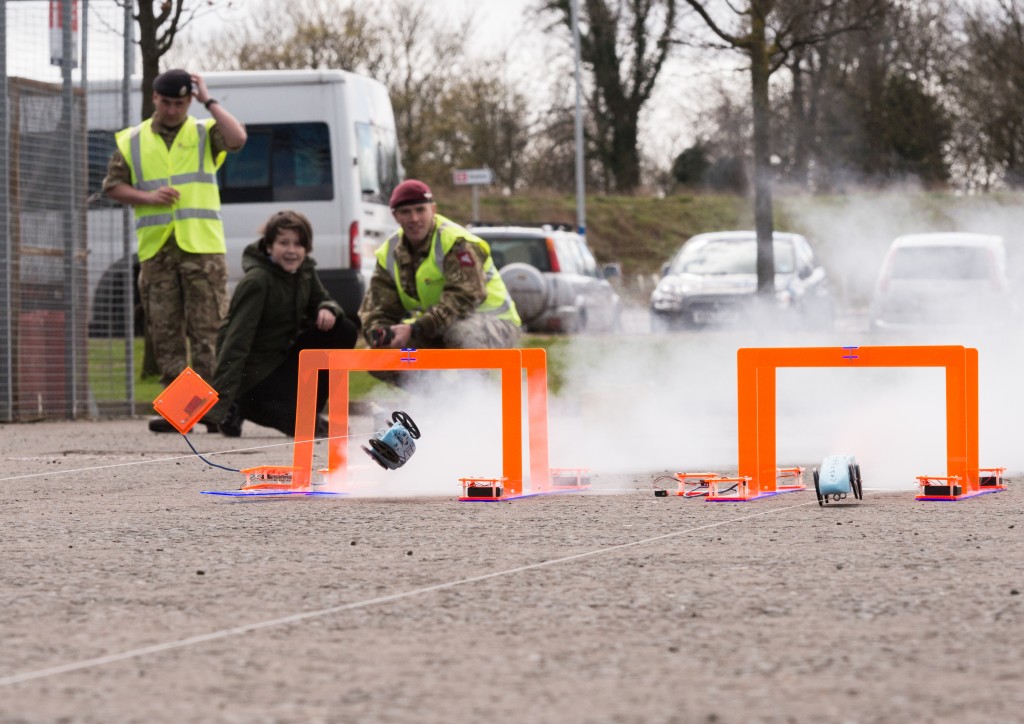
Yet amid the fun, what about the science? That largely came down to the preciseness of the design and engineering process, but equally important was the inclusion of the BBC micro:bit – a small codeable computer designed by the BBC with partners such as Microsoft to get more children into coding and computer science. Last month, every Year 7 pupil in the country received their own free micro:bit for use inside and outside the classroom.
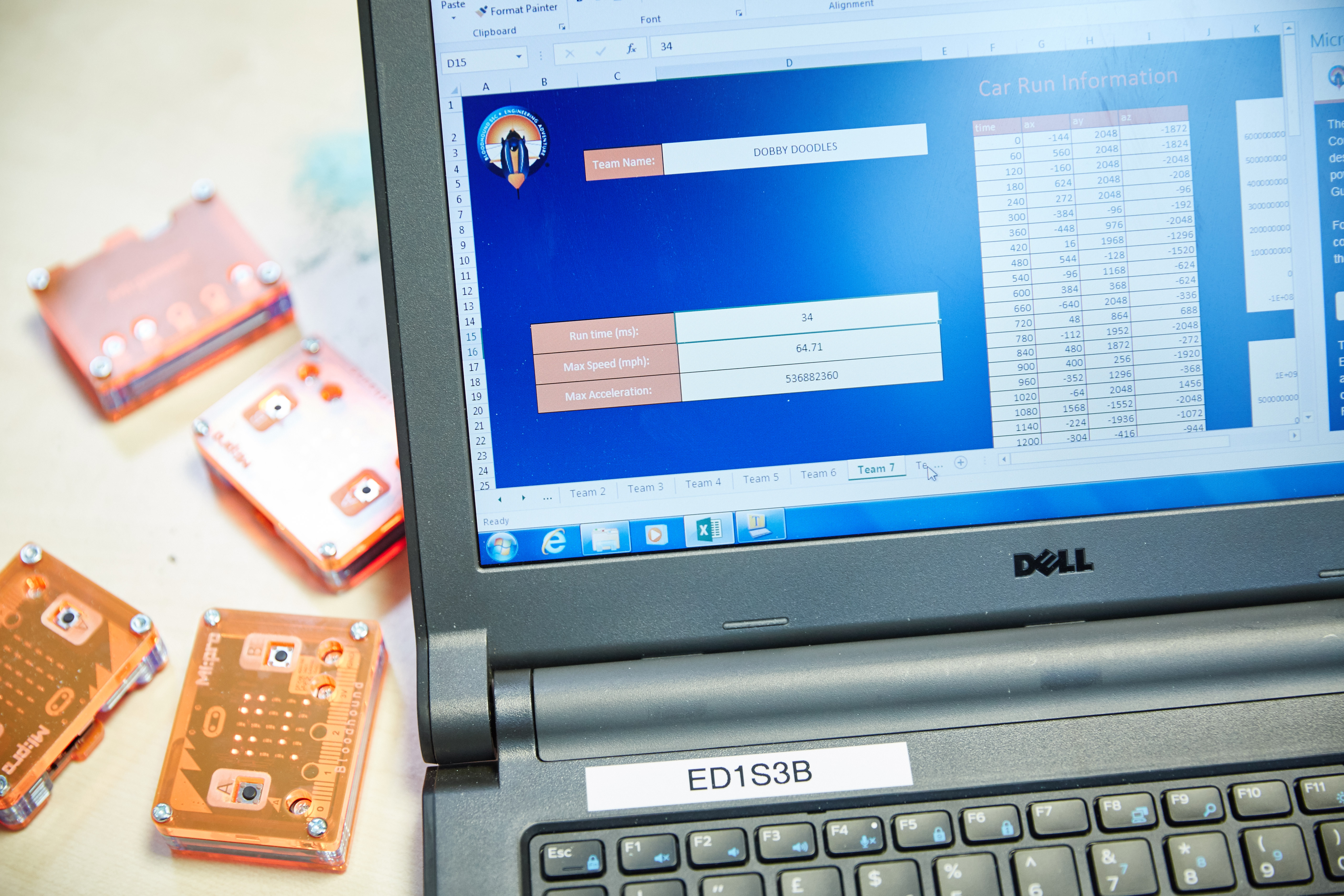
In the case of Race to the Line, the device’s job is to capture real-time telemetry from the car before using a Microsoft Office add-on to pull the data onto a PC for review by the pupils and race judges. This information can then be used by the kids to tweak their car and improve its performance.
“What we’ve done is take the physical experience of building a foam rocket car and combine it with learning how to code the BBC micro:bit,” says Andrew Webber, Emerging Developer Audience Lead at Microsoft, who is leading the company’s involvement in Race to the Line. “The UK is facing a shortage in science, technology, engineering and maths (STEM) skills, with technology evolving so rapidly that it’s been difficult for the education system to keep up.
“This project is about helping schoolchildren gain the digital skills they will need in the future, whatever their chosen career. But it’s also about making computer science fun, inspiring them to become the next generation of technology innovators who fill that STEM gap. So far, the reaction has been brilliant.”
Competition among the pupils on the day was fierce. Teams were comprised of four students: two kids from Year 7 and two from Year 12. As well as building the fastest car, part of their challenge was to find a way for teammates with varying degrees of engineering knowledge and coding ability to work effectively together.
We’ve never really done something like this before. It’s interesting to see all the different things we’re using to make the car.
Year 7 student Emma Harrison
“In our team, Chris and I from Year 12 built the car but Josh and Matt from Year 7 designed it,” explains pupil Tom Benton. “So you could call them the brains of the operation. We tried to make the car really streamlined to reduce air resistance and go as fast as possible. The BBC micro:bit’s accelerometer measured its speed and compared it with the other teams. Projects like this definitely help inspire young people to get into coding.”
Sadly for Tom and his team, victory proved elusive. That honour went to Dobby Doodles, whose foam rocket car shot across the playground at an impressive 66mph. The team will be hoping that will be enough to secure a place in the national final on June 30 at the Santa Pod Raceway in Northampton. The top three fastest teams there will receive a cash prize for their schools, while the winning team overall will win a trip to Newquay to watch the Bloodhound SCC car, that will attempt the land speed record, do 200mph runs up and down the Newquay runway.
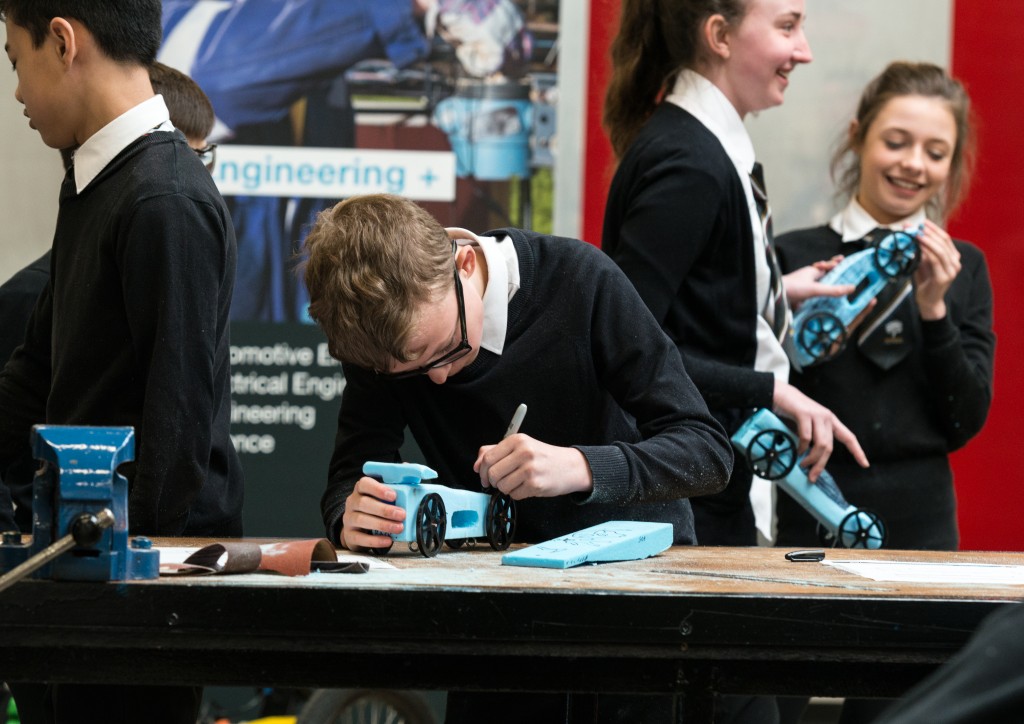
Not that it’s just about the winning, of course. Well, not entirely anyway.
“Bringing external partners like Microsoft and Bloodhound into the school for this kind of project helps the pupils understand the connection between what they’re doing in the classroom and the outside world,” says Kennet teacher Mel Poyda . “That helps us better engage them in the subject because they can see the end-game.”
It’s an important bigger picture and one of the reasons that hundreds of teachers around the country, including Ms Podya herself, are already using the BBC micro:bit to add another level to learning across the curriculum.
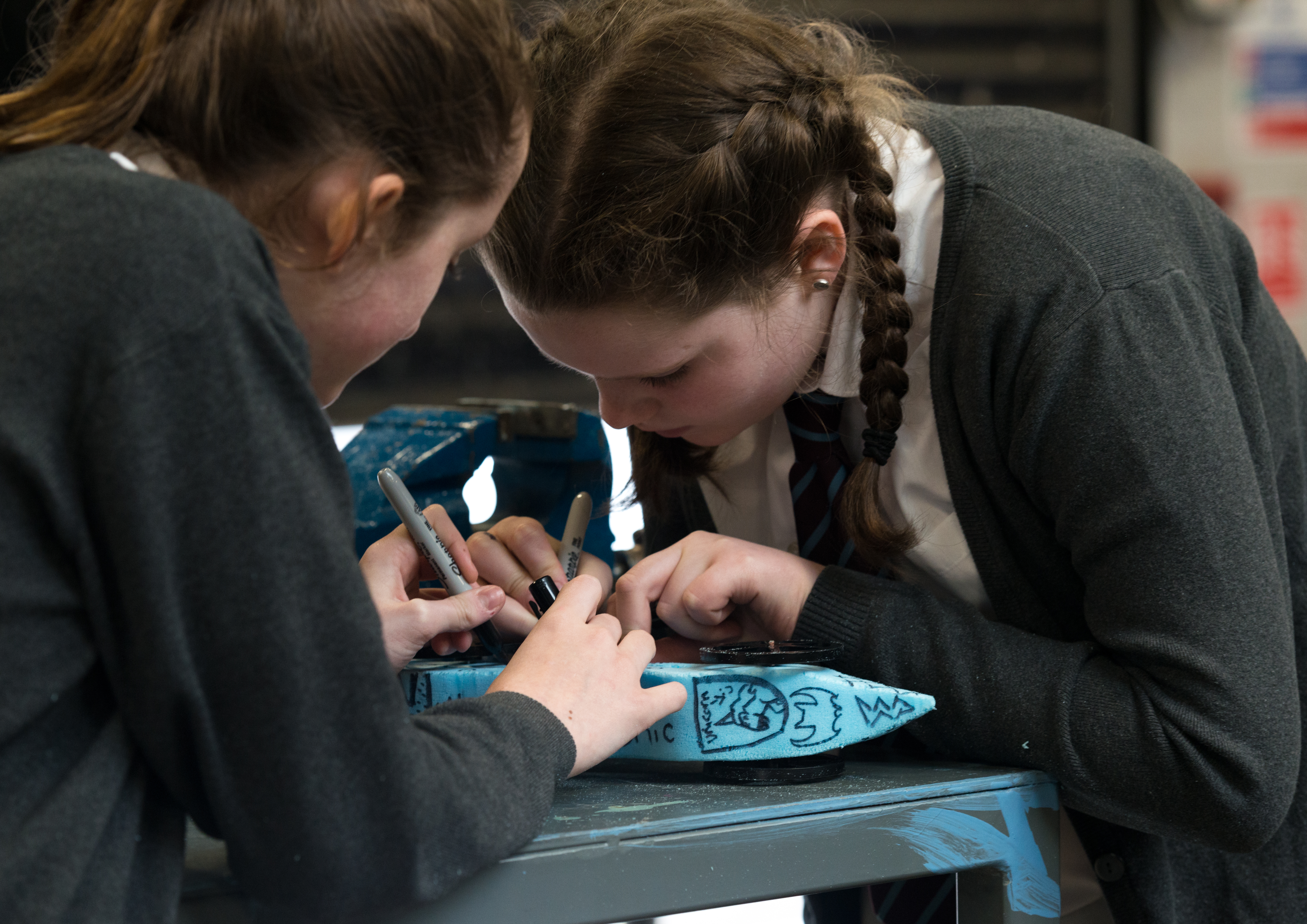
“This sort of technology helps us teach kids to think for themselves, be creative and ask ’what if?’ in all kinds of subjects,” she adds. “That’s why when I saw the resources developed to support the BBC micro:bit I was ecstatic. From step-by-step teaching guides to pupil packs, all the information is there. That’s exactly what we need to make this a success and show pupils that finding something you can’t do is actually a great thing. Why? Because working out how to solve it is a wonderful feeling.”





